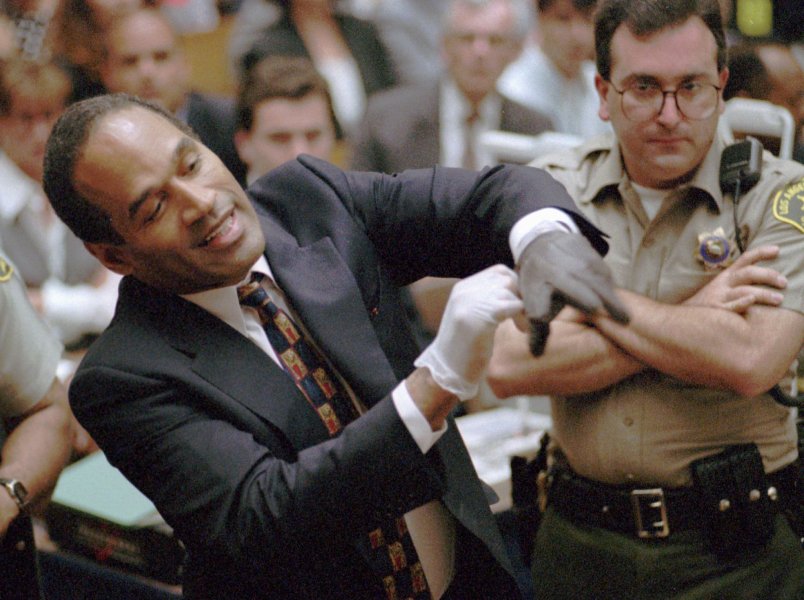OJ Simpson’s death today at 76 seems and by all rights should be a smallish blip on the news horizon. He hasn’t been a public figure of any consequences in more than 26 years and he hasn’t been a truly public one in the sense of being successful or beloved in 30. But it’s still some milestone because of what a seismic event his killing of his estranged wife, Nicole Brown Simpson, and her friend, Ron Goldman, and his subsequent trial truly were.
There are so many dimensions of this event you could write whole books about — a good half a dozen meta-topics spring to mind without even giving the matter much thought. Though it was essentially a pre-internet story, it was unique to the early cable news era, a kind of progenitor of today — CNN, national tabloid culture, the birth of commentator culture. In a way it created each. The story had this criss-crossed relationship with racism and the country’s racial politics and the state of the criminal justice system, one which was upended, hopelessly upside down and yet somehow deeply true. It was at heart of horribly ordinary story about chronic spousal violence which finally escalated to murder. There was the DNA, the glove, the perjurious racist cop. The whole thing was like a universal text.
There are like a dozen different genetic lines of popular culture that trace back to this one event and the trial that came after it. As one of my colleagues noted this morning, you probably don’t have the phenomenon we know as simply The Kardashians absent the OJ trial. Strange. But true.
Many of these threads of the story seem much clearer today or very different today than they did then — the race and criminal justice dimension, the spousal violence/violence against women dimension, the electronic and mass media dimension.
There is one part though that I think is much harder to see now, obscured by time and the story itself, and that’s the one that made it a story of such explosive magnitude in the first place — that is quite simply who OJ Simpson was, or to draw our attention to that critical difference, who he was in the American public imagination until June 1994. And that distinction goes to the heart of almost every dimension of the story itself.
It is almost impossible to capture how much of a hero OJ was — how almost universally beloved in popular culture. He was one of the greatest football players and then went on to become a legit movie star and was somehow everyone’s friend. It would be like if the news broke that Tom Brady had murdered his wife. But not quite like that because it would be like if Tom Brady was Tom Brady but then also became a movie star and then killed his wife. Everyone was pumped when OJ went from success to success as an actor because OJ was your pal and who doesn’t like seeing your pal have success after success? And even that’s not quite it because at the heart of Brady’s fame and greatness is that essential aloofness. At the heart of Brady’s public celebrity is that methodical and total dedication to being Tom Brady. That’s what allowed him to be both the greatest quarterback ever and also probably the one with the greatest longevity ever and even able to get another Super Bowl ring with one of those career-ender one-year contracts with a nowhere team that so many of the greats do at the tail end of their career.
You can marvel at a Tom Brady. But Tom wasn’t going to have a barbecue at your house, or crack jokes with your family or throw the ball around with you. He’d be off getting some kind of obscure East Asian deep muscle rubdown and drinking some woo-woo energy potion because that’s what it takes to be Tom Brady. That wasn’t OJ. OJ was your pal.
And at the center of all of this was the fact that OJ was Black. And though it’s become a total cliché to say, it is nonetheless true that OJ strode on the public stage during a period in our history when he was able to be one of the very first Black men allowed full access into white celebrity culture in the way I’ve described above. So at heart, the OJ story — while about racism, gender, sex, violence, criminal justice, media — is fundamentally about celebrity culture and the fantasy version of people we create about people we don’t really at all know.
I was 25 in June 1994, so not at all a ten-year-old kid or particularly starry-eyed and I had a really, really hard time believing that this had happened, that he had done this.
It’s a story about the fantasy world of the public imagination. In reality OJ was a particularly brutal murderer and that violence against his estranged wife had been building incrementally for years, as is so often the case for men who kill their partners. And it was also a story about virtually everything else. Looking back on it all today, with the more ordinary and unremarkable man Simpson turned out to be, it’s kind of hard to believe he was able to sustain such a public spectacle and storm. But he did.


 Member Newsletter
Member Newsletter
